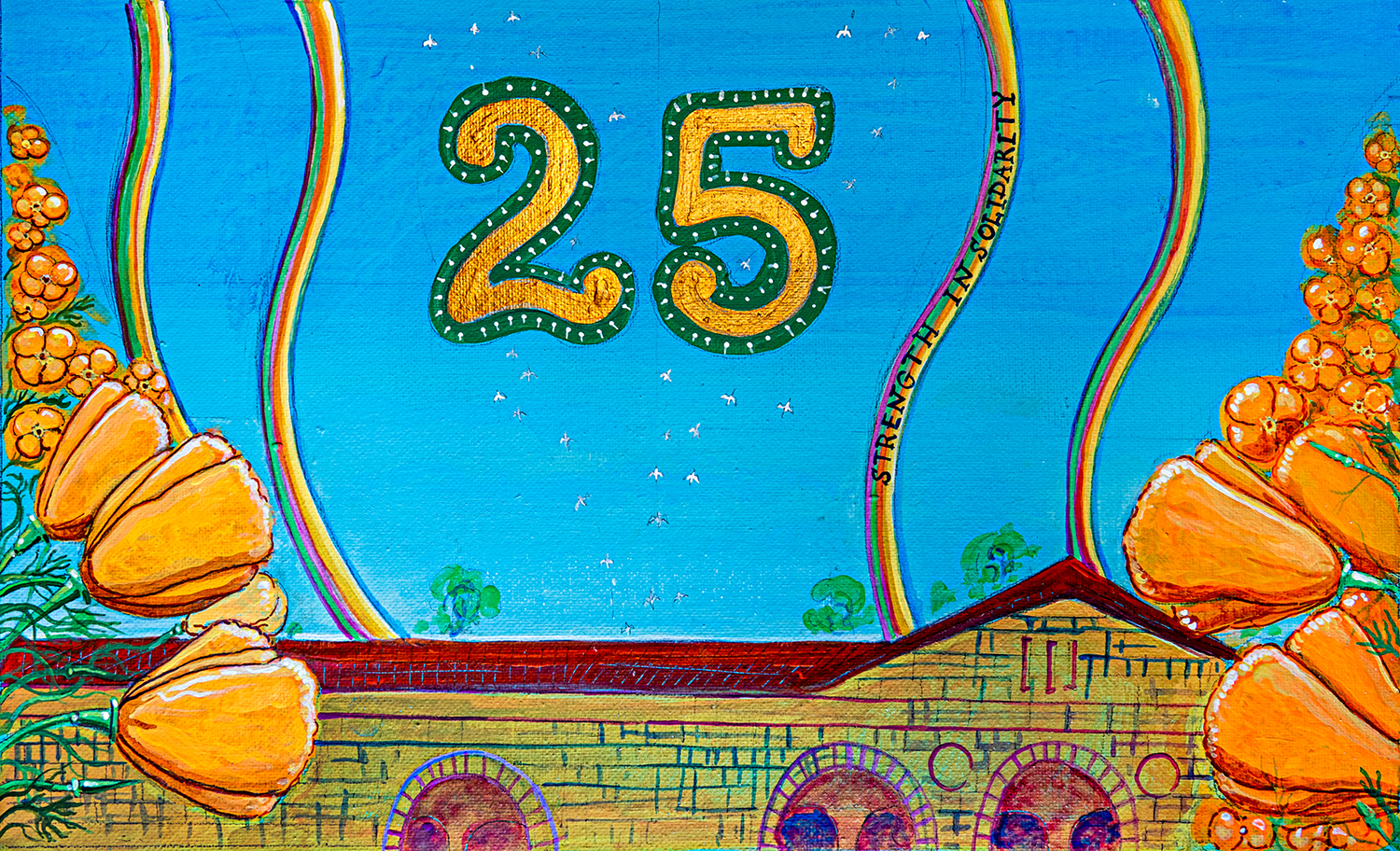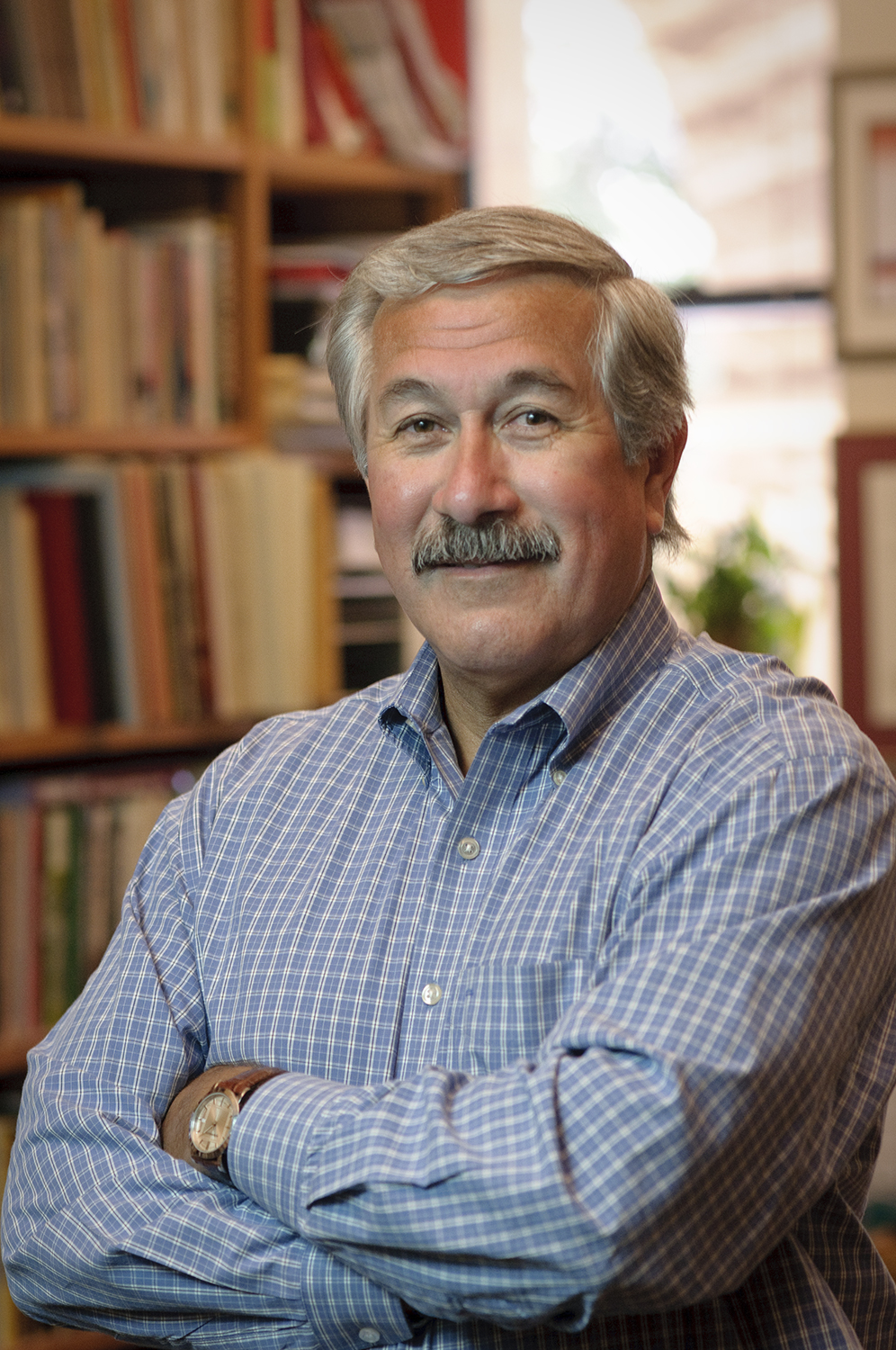Stanford’s CCSRE celebrates 25 years of research and teaching for race and ethnic studies
As the Center for Comparative Studies in Race & Ethnicity (CCSRE) celebrates its 25-year anniversary, founding director Al Camarillo and current director Jennifer DeVere Brody reflect on how race and ethnic studies has transformed at Stanford thanks to interdisciplinary collaboration and connection.
When Stanford University began planning for a Center for Comparative Studies in Race & Ethnicity in the early 1990s, the nation was reeling from myriad racial issues: A video of police beating Rodney King, a Black man, had gone viral and nationwide violence erupted following the acquittal of four police officers accused of assaulting him. Meanwhile, anti-immigrant rhetoric in U.S. politics was on the rise, recalled Albert Camarillo, CCSRE’s founding director.

The Center for Comparative Studies in Race & Ethnicity (CCSRE) commemorates its 25th anniversary with an event June 4, a new publication about its history and an original painting, pictured here, created by the Oakland-based artist Diego Marcial Rios. (Image credit: Diego Marcial Rios)
As the center kicks off its 25-year anniversary with an event on June 4 and a new publication on its history, these issues around race and ethnicity remain as relevant today as they were when the center launched in 1996.
“These are not new things,” said Camarillo. “These are the legacies of the past with contemporary manifestations. Almost every single one of them. What it tells us is that race is even more important today than 25 years ago when we established the center, or even in the late 1960s and early 1970s with the birth of ethnic studies.”
Interdisciplinary beginnings
When Camarillo came to Stanford in 1975 as a professor in the History Department, ethnic studies was a nascent discipline.
“We didn’t know it would have sustaining power, whether it would catch on, whether programs or faculty would survive and sustain and build,” said Camarillo, among the first historians in the United States specializing in Chicana/o history and the Leon Sloss Jr. Memorial Professor, Emeritus, in the School of Humanities and Sciences. “It was an unknown proposition because it was brand new in American higher education in the 1960s and 1970s.”
By the early 1990s, however, race and ethnic studies had gained momentum at Stanford and other universities, propelled in part by passionate faculty and students, Camarillo explained.
But it wasn’t until Camarillo, along with his colleague, the late history professor George Fredrickson, secured a grant in 1994 from the Andrew W. Mellon Foundation to lead a two-year Sawyer Seminar focused on comparative race and ethnic studies that faculty from across campus whose research touched on the topic came together for the first time.
For Camarillo and other seminar participants, the experience was transformative, leading to new ways of understanding race and ethnicity in America.
“It was the ‘aha moment’ for so many of us,” said Camarillo. He recalled sharing his work comparing patterns of African American, European immigrant and Mexican American urban residential segregation in the early 1900s. “When a colleague, I think it was Gordon Chang, asked me about how San Francisco’s Chinatown fit into these patterns, it made me think further about the question. After further reading, I came to the conclusion that Chinatown is, in fact, the first example of a racialized ghetto in American history,” he said.
Through these comparative discussions, it became clear to the cohort that they were onto a new way of doing scholarship. “That seminar was really critical as the intellectual foundation for those of us who wanted to come together and do race and ethnic studies in a much more organized, supported fashion,” Camarillo said.
Other than the African and African American Studies Program (AAAS), there was no other organized undergraduate program in ethnic studies at Stanford at the time.
Over the subsequent years, Camarillo, who was then associate dean in charge of undergraduate studies, worked closely with then dean of the School of Humanities and Sciences Ewart Thomas, and later John Shoven, to envision what a more permanent race and ethnic studies program might look like.
Plans to expand race and ethnicity programming at Stanford were accelerated following a wave of student activism in 1994, including a hunger strike by five students, one of whom was Elvira Prieto, BA ’96, who is now associate dean of students and director of El Centro Chicano y Latino. Two years later, on November 21, 1996, the Faculty Senate unanimously approved a plan to establish CCSRE.
Establishing the center was only the beginning, however. There was also the question of how to run it. At the time, there were different schools of thought regarding how to study race and ethnicity. While some universities that had established race and ethnic studies early combined their programs, other institutions kept them as standalone departments. Inspired in part by the Sawyer Seminar, Camarillo and his colleagues proposed a third option: taking a comparative approach to race and ethnicity.
“A comparative approach allows us to more fully explore the nuances of structural racism and race and ethnic relations in the United States,” Camarillo explained. “When we start looking at how racial inequality affects groups over time, similarly and differently, this gives us both a more in-depth understanding and a broader picture of how race works in our society.” Camarillo called this new take ethnic studies “2.0.”
CCSRE put Asian American Studies, Chicano/a Studies (later Chicana/o and Latina/o Studies), and Native American Studies under its auspices, with Jewish Studies and AAAS as affiliate programs. Beginning in 1996-97, the first group of undergraduate students declared a major in Comparative Studies in Race & Ethnicity (CSRE). Over the next six years, CSRE was the fastest growing major at the university. In 2019, a PhD minor in CSRE was approved.
In tandem with CCSRE’s founding was the establishment of the Research Institute for Comparative Studies in Race & Ethnicity (RICSRE) to foster interdisciplinary scholarship among Stanford faculty. Claude Steele from psychology and Fredrickson served as its first co-directors.
Cultivating collaboration
All of this contributed to CCSRE becoming a hub on campus for scholars working to examine how race and ethnicity are embedded in U.S. society. When CCSRE launched, it started with just a few dozen affiliated faculty members. That number has grown to nearly 150 affiliated faculty members, spread across 28 departments and six of Stanford’s schools. “Just by that measurement alone, the study of race and ethnicity is now firmly embedded in the fabric of the institution,” said Camarillo.
CCSRE has become an intellectual home for students as well. There are currently some 100 students enrolled in the CSRE major and over 500 alums, including the former mayor of Stockton, California, Michael Tubbs, who graduated from the CSRE program in 2012.
Community-engaged learning continues to be a core aspect of the center’s undergraduate program. Through a variety of courses and fellowships, students work with community partners to deepen their learning and make concrete impacts on racial justice issues in the community. For example, Gema Quetzal, ’23, working with the grassroots group Oakland Youth Vote, helped educate the community about Measure QQ to expand voting rights to 16- and 17-year-olds in school board elections.
“These opportunities support students dedicated to social change, activism and community organizing as research by which they learn analytical and practical skills with communities beyond the Stanford campus,” said Jennifer DeVere Brody, CCSRE’s most recent director.
Advancing new understandings of race, ethnicity
Over its quarter-century of existence, CCSRE has helped cultivate relationships that have resulted in countless publications revealing new ways of understanding race.
For example, the book Doing Race: 21 Essays for the 21st Century (W.W. Norton, 2010) emerged from the Introduction to CSRE course, co-taught by Hazel Rose Markus in psychology and Paula Moya in English. The course featured over a dozen guest lecturers from faculty across the university explaining race and ethnicity from their disciplinary perspective. From these discussions, the two scholars saw parallel themes emerge that became the basis for their book, which advocated for a new way to think about race. “Contrary to what most people believe, race and ethnicity are not things that people have or are. Rather they are actions people do,” they wrote in the book’s introduction.
This unique perspective led the pair to develop other projects at CCSRE, including the creation of RaceWorks, a set of tools for educators and other group facilitators to develop their students’ or coworkers’ racial literacy: By knowing how people “do race,” only then can racism be undone.
Expanding CCSRE’s efforts
The center continues to launch and expand a variety of initiatives and projects under DeVere Brody’s leadership.
It recently launched a Race and Justice Research Initiative linking ethnic studies scholarship with community-based practices of racial justice. Stanford faculty lead labs with community partners to tackle issues negatively impacting residents – for example, sociologist Jackelyn Hwang is collaborating with the City of Oakland’s Department of Housing and Community Development to address housing instability and displacement.
“It took not only the people – the faculty and the students who promoted the importance of race studies – it took innovative leaders of the institution to say, ‘It is important, we agree with you, and we are going to help you develop it because it’s something we should do as a university.’ ”
—Albert Camarillo
Founding Director, CCSRE
With its Stanford partners, the Institute for Human-Centered Artificial Intelligence and the Digital Civil Society Lab, CCSRE also established a Technology and Racial Equity Initiative to examine relationships between technological developments and racial inequities. One project, for example, examines how to correct gender and race bias in algorithms.
“This approach to technological innovation requires interdisciplinary knowledge that can, as the sociologist Ruha Benjamin put it, ‘weave new patterns and encode new values.’ The center plays a key role in ensuring that the intersections between racial justice and technology are robust, viable and mutually productive,” DeVere Brody said.
Another initiative is the Mellon Arts Practitioner Fellowship, which welcomed its first cohort in 2021, made up of four visual artists of color who combine their practice with activism and racial justice. The fellowship is funded in part from a $4 million seed grant from the Andrew W. Mellon Foundation to investigate the connections between the study of race and racism and academic fields in the humanities.
The next generation of race and ethnic studies
Camarillo said that while he cannot predict what direction race and ethnic studies will take over the next 25 years, he is confident it will be critical for understanding some of society’s most complicated, pressing problems.
Over the past year, Camarillo, along with other CCSRE faculty affiliates, have participated in a task force Provost Persis Drell formed through the IDEAL initiative to envision what race and ethnic studies should look like for the next generation of Stanford scholars.
Reflecting on the growth of race and ethnic studies over the past three decades, Camarillo said: “It took not only the people – the faculty and the students who promoted the importance of race studies – it took innovative leaders of the institution to say, ‘It is important, we agree with you, and we are going to help you develop it because it’s something we should do as a university.’”
Paula Moya will serve as the next director of CCSRE. Her appointment will start Sept. 1, 2021.

